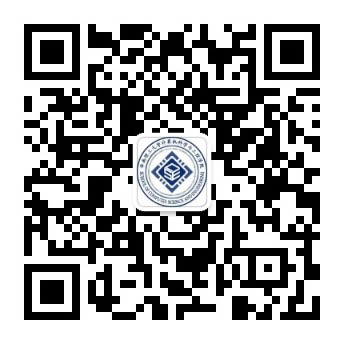《数据通信原理》实验教学大纲
课程代码 | 045102731 |
课程名称 | 数据通信原理 |
英文名称 | DataCommunication Principles |
课程类别 | 专业基础课 |
课程性质 | 必修 |
学时 | 总学时:64实验:16实习:0其他:0 |
学分 | 3.5 |
开课学期 | 第三学期 |
开课单位 | 计算机科学与工程学院 |
适用专业 | 网络工程 |
授课语言 | 中文授课 |
先修课程 | 高等数学、线性代数、电路与电子技术 |
毕业要求(专业培养能力) | (1)掌握本专业的基本理论、基本方法及与本课程相关的基础知识; (2)培养出综合应用的能力和创新精神,提升分析问题、解决问题的能力; (3)了解本课程相关的理论研究的最新进展与发展动态; (4)对信号的产生、信息的传输与处理有具体的理解; (5)以多媒体信号通信与处理系统为样例学习,更深入地理解相关理论与工程应用问题。 |
课程培养学生的能力(教学目标) | 完成课程后,学生将具备以下能力: (1)掌握数据通信系统的基本原理和基本知识,培养学生发现问题、解决问题的基本能力。 (2)掌握模拟信号的数字编码、数字基带信号及传输、数字信号的处理等基本概念、原理及关键技术。 (3)掌握多媒体信号处理、信息论等基本知识。 |
课程简介 | 数据通信原理是网络工程专业的一门重要的专业基础课。这是一门系统性、理论性强,同时又强调实践性的课程。本课程介绍了数据通信与处理系统的基本原理、基本方法和基本技术。 |
主要仪器设备与软件 | 主要仪器设备:计算机 主要软件:Matlab |
实验报告 | 得到正确的实验数据及波形,理解实验原理及实验方案,能正确分析实验结果;要求书写规范,实验报告符合要求。报告内容包括:实验名称、实验目的、实验要求、实验内容、实验结果和分析。 |
考核方式 | 本实验课程注重过程考核,成绩比例为: 实验考勤:10% 操作技能:50% 实验报告:40% |
教材、实验指导书及教学参考书目 | 教材:冯穗力、余翔宇、柯峰等,数字通信原理,电子工业出版社,2016 实验指导书:达新宇等著,通信原理实验与课程设计,电子工业出版社,2016 主要参考资料: [1]刘衍珩,王健等,数据通信,机械工业出版社,2013 [2]Bermard Sklar(著),徐平平等(译),数字通信-基础与应用(第二版),电子工业出版社,2015 [3]傅祖芸、赵建中,信息论与编码,电子工业出版社,2014 [4]John G. Proakis,DigitalCommunications (4thEdition),McGrawHill,电子工业出版社,2001 [5]A Scientist and Engineers' Guide to Digital Signal Process (2ndEdition), Steven W. Simith, California Technical Publishing, 1999 |
制定人及发布时间 | 全宇晖,2019年5月8日 |
《数据通信原理》实验教学内容与学时分配
实验项目编号 | 实验项目名称 | 实验学时 | 实验内容提要 | 实验类型 | 实验要求 | 每组人数 | 主要仪器设备与软件 |
1 | MATLAB数字信号处理基础 | 4 | 熟悉MATLAB工作环境及常用模块;掌握MATLAB建模和仿真方法;理解信号产生原理及过程。 | 验证性 | 必做 | 1 | 计算机、Matlab |
2 | 语音信号传输与处理实验 | 4 | 实验观察并理解语音信号生成、编码和处理的工作原理和方法。 | 综合性 | 必做 | 1 | 计算机、Matlab |
3 | 图像信号传输与处理实验 | 4 | 通过实验理解处理图像信号传输和处理的基本方法和技术。 | 综合性 | 必做 | 1 | 计算机、Matlab |
4 | 线性分组码实验 | 4 | 理解差错控制系统的基本原理;掌握线性分组码差错控制原理和方法。 | 综合性 | 必做 | 1 | 计算机、Matlab |
………… | ………… | ………… |
“DataCommunication Principles” Syllabus
CourseCode | |
CourseTitle | DataCommunication Principles |
CourseCategory | SpecialtyBasic Courses |
CourseNature | CompulsoryCourse |
ClassHours | Totalhours: 64, Experimental hours: 16 |
Credits | 3.5 |
Semester | Thethird semester |
Institute | Schoolof Computer Science and Engineering |
ProgramOriented | NetworkEngineering |
TeachingLanguage | Chinese |
Prerequisites | Highermathematics; Linear algebra; Circuit and electronic technology |
StudentOutcomes (Special Training Ability) | (1) Master the professionalbasic theory, basic methods and knowledge base related to thiscourse. (2) Develop comprehensiveapplication ability and innovation spirit, and enhance the abilityto analyze and solve problems. (3) Understand the latestprogress and developments of theoretical research related to thiscourse. (4) Has a specificunderstanding of signal generation, transmission, exchange andprocessing. (5)Take the multimedia signal communication and processing system asan example to learn, and understand the related theory andengineering application problems more deeply. |
TeachingObjectives | Upon completion of the course,students will have the following abilities: (1) Master the basicprinciples and basic knowledge of data communication systems, anddevelop the basic ability to find problems and solve the problem. (2) Master digital coding ofanalog signals, digital baseband signal and transmission, digitalsignal processing and other basic concepts, principles and keytechnologies. (3)Master multimedia signal processing, information theory and otherinformation theory knowledge. |
CourseDescription | Thecourse of data communication principles is an importantprofessional course of network engineering. It is a systematic,theoretical, and emphasis on practical courses. The courseintroduces the basic principles, basic methods and basictechniques of data communication systems. |
Instrumentsand Equipments | Computers,Matlab. |
ExperimentReport | Getthe correct experimental data and waveform, understand theexperimental principle and experimental program, and correctlyanalyze the experimental results; Require writing specifications,experimental reports meet the requirements. The report includes:experimental name, experimental purpose, experimentalrequirements, experimental content, experimental results andanalysis. |
Assessment | Thisexperimental coursepays attention to process evaluation, achievement ratio for: experimentalattendance: 10% operatingskills: 50% experimentalreport: 40% |
TeachingMaterials and Reference Books | Teachingmaterials: Suili Feng, Xiangyu Yu, Feng Ke, digital communicationprinciple, electronic industry press, 2016 Themain reference: [1]Yanheng Liu, Jian Wang, etc., data communication, mechanicalindustry press, 2013 [2]Bermard Sklar (author), Pingping Xu (translation), digitalcommunication - basic and application (second edition), electronicindustry press, 2015 [3]Zuyun Fu, Jianzhong Zhao, information theory and coding,electronic industry press, 2014 [4]John G. Proakis,DigitalCommunications (4thEdition),McGrawHill,electronicindustry press, 2001 [5]A Scientist and Engineers' Guide to Digital Signal Process (2ndEdition), Steven W. Simith, California Technical Publishing, 1999 |
Preparedby Whom and When | YuhuiQuan, 2019.05.08 |
“DataCommunication Principles” ExperimentalTeaching Arrangements
No. | ExperimentItem | ClassHours | ContentSummary | Category | Requirements | Numberof StudentsEach Group | Instruments,Equipments and Software |
1 | The basisof digital signal processing in MATLAB | 4 | Familiarwith MATLAB working environment and common modules; master MATLABmodeling and simulation methods; understand signal generationprinciples and processes. | Verification | Compulsory | 1 | PC,Matlab. |
2 | Speechsignal transmission and processing | 4 | Observeand understand the principles and methods of speech signalgeneration, coding and processing. | Comprehensive | Compulsory | 1 | PC,Matlab. |
3 | Imagesignal transmission and processing | 4 | Observeand understand the principles and methods of image signalgeneration, coding and processing. | Comprehensive | Compulsory | 1 | PC,Matlab. |
4 | Linearblock code | 4 | Understandthe basic principles of error control systems; master theprinciple and method of linear block code error control. | Comprehensive | Compulsory | 1 | PC,Matlab. |
…… | …… |



